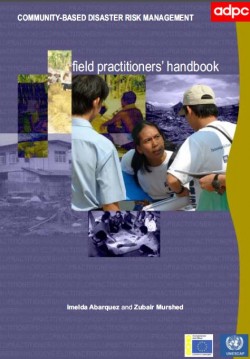Purpose
The purpose of this Community-Based Disaster Risk Management (CBDRM) Field Practitioners’ Handbook is to help equip CBDM or CBDRM practitioners with theories and practical tools that can be applied in community work.
Overview
The handbook is divided into three parts:
- The first part clarifies the basic concepts of CBDRM such as disaster risk terms and project management concepts.
- The second part covers essential tools for implementing various stages of the CBDRM process. It provides step by step instructions to facilitate specific activities. It includes narrative instructions, tables and charts. The topics covered are Participatory Project Cycle Management, Participatory Disaster Risk Assessment and Action, Formation and Training of Community Disaster Risk Management Organisations and Participatory Monitoring and Evaluation.
- The third part discusses tools on two cross-cutting themes related to CBDRM – Gender Conscious Approach to CBDRM, and Disaster Risk Communication (DRC). Three key concepts have been introduced in this handbook. These are: Community-Managed Implementation; Participatory Disaster Risk Assessment and Action; and Gender Conscious Approach to Disaster Risk Reduction.
Usage: Guidance for project implementation
Audiences: Technical staff
Reference: Abarquez, I. & Murshed, Z. (2004). Community-based disaster risk management: Field practitioners’ handbook. Asian Disaster Preparedness Center.(ADPC). Pp.1-163. Available from: http://www.adpc.net/igo/contents/Publications/publications-Details.asp?pid=428#sthash.Mr5hK3o0.dpbs. [Accessed: 19th September 2015].
![]()


